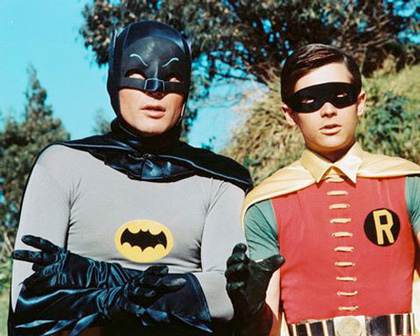![]()
There are a bewildering number of words to describe that someone has been drinking a bit to much. I’ve collected over 3,000 slang terms, or Drunk Words. There are modern terms, of course, and slang from almost every age of man. Even Ben Franklin had his own list. Another literary take on over-indulging came from Thomas Nashe, who “was a playwright, poet, and satirist. He is best known for his novel The Unfortunate Traveller.” He lived from 1567 until around 1601, and was also “considered the greatest of the English Elizabethan pamphleteers.” One of his pamphlets was entitled the Pierce Penniless, His Suppliction to the Devil, published in 1592. “It was among the most popular of the Elizabethan pamphlets.”
It is written from the point of view of Pierce, a man who has not met with good fortune, who now bitterly complains of the world’s wickedness, and addresses his complaints to the devil. At times the identity of Pierce seems to conflate with Nashe’s own. But Nashe also portrays Pierce as something of an arrogant and prodigal fool. The story is told in a style that is complex, witty, fulminating, extemporaneous, digressive, anecdotal, filled with wicked descriptions, and peppered with newly minted words and Latin phrases. The satire can be mocking and bitingly sharp, and at times Nashe’s style seems to relish its own obscurity.

And this is the sort of introduction of the list, that paragraphs that precede it.
King Edgar, because his subjects should not offend in swilling, and bibbing, as they did, caused certaine iron cups to be chayned to everie fountaine and wells fide, and at euery Vintner’s doore, with iron pins in them, to stint euery man how much he should drinke; and he that went beyond one of those pins forfeited a penny for euery draught. And, if stories were well searcht, I belieue hoopes in quart pots were inuented to that ende, that eury man should take his hoope, and no more. I haue heard it justified for a truth by great personages, that the olde Marquesse of Pisana (who yet liues) drinkes not once in feauen years; and I haue read of one Andron of Argos, that was so sildome thirstie, that hee trauailed ouer the hot, burning sands of Lybia, and neuer dranke. Then, why should our colde Clime bring forth such fierie throats? Are we more thivstie than Spaine and Italy, where the sunnes force is doubled? The Germaines and lowe Dutch, me thinkes, should bee continually kept moyst with the foggie ayre and stincking mystes that aryse out of theyr fennie soyle; but as their countrey is ouer-flowed with water, so are their heads alwayes ouer-flowen with wine, and in their bellyes they haue standing quag-myres and bogs of English beere.
One of their breede it was that writ the booke, De Arte Bibendi, a worshipfull treatise, fitte for none but Silenus and his asse to set forth : besides that volume, wee haue generall rules and injunctions, as good as printed precepts, or statutes set downe by Acte of Parliament, that goe from drunkard to drunkard; as still to keepe your first man, not to leaue anie flockes in the bottonie of the cup, to knock the glasse on your thumbe when you haue done, to haue some shooing home to pul on your wine, as a rasher of the coles, or a redde herring, to stirre it about with a candle’s ende to make it taste better, and not to hold your peace whiles the pot is stirring.
Nor haue we one or two kinde of drunkards onely, but eight kindes.
THE EIGHT KINDES OF DRUNKENNES
Below are the eight types of drunks, as articulated by Nashe, along with commentary by the staff of Merriam-Webster.
- Ape Drunk

The first is ape drunke; and he leapes, and singes, and hollowes, and danceth for the heavens;From Merriam-Webster: A number of the animals referenced in Nashe’s list have found themselves commonly used in compound nouns, or functioning as a figurative adjective. Ape, however, appears to have largely escaped this fate. It does come up in the expression go ape (“to become very excited or angry”), which is somewhat similar in meaning to the actions of the drunk described by Nashe but as this is not recorded until the middle of the 20th century it is unlikely to have a connection to ape drunk.
- Lion Drunk

The second is lion drunke; and he flings the pots about the house, calls his hostesse whore, breakes the glasse windowes with his dagger, and is apt to quarrell with anie man that speaks to him;From Merriam-Webster: When considering how often one encounters another person who might best be described as “drunk and mean,” it is rather odd that we should have lost more than one useful ways of referring to such a person in our language. For in addition to Nashe’s lion drunk a number of Scottish dictionaries make note of barley-hood, which is an episode of bad temper brought about by imbibing. A variant of this word, barlikhood, is memorably defined in the glossary to a collection of British plays from the late 18th century: “a fit of drunken angry passion.”
- Swine Drunk

The third is swine drunke; heavie, lumpish, and sleepie, and cries for a little more drinke, and a fewe more cloathes;From Merriam-Webster: Some people think that swine have received a bad rap, what with the whole secondary meaning of “contemptible person,” large portions of the world’s population considering them unclean animals, and the general pejorative meanings of the word pig; others think that they likely don’t care much, save to be relieved that some people do not want to eat them. It is unclear to most lexicographers what connection exists between the members of the family Suidae and Nashe’s idea that a swine drunk wants a “fewe more cloathes.”
- Sheep Drunk

The fourth is sheepe drunk; wise in his conceipt, when he cannot bring foorth a right word;From Merriam-Webster: Sheep are not an animal that is traditionally associated with drunkenness, or misbehavior of any sort, come to think of it. The word for this particular animal has been used to indicate that a person, or group or people, is timid, meek, or in some other fashion unassertive. If you would like to describe someone as sheepish, meaning “resembling a sheep”, but would like to not have to explain that you don’t mean the sense of sheepish that is tied to embarrassment, you may use the word ovine.
- Maudlin Drunk

The fifth is mawdlen drunke; when a fellowe will weepe for kindnes in the midst of ale, and kisse you, saying, “By God, captaine, I love thee. Goe thy wayes; thou dost not thinke so often of me as I doo thee; I would (if it pleased God) I could not love thee as well as I doo;” and then he puts his finger in his eye, and cryes;From Merriam-Webster: We have all met the maudlin drunk; in fact, the word maudlin began with the express meaning of “drunk enough to be emotionally silly,” and later took on the sense of “effusively sentimental.” The word comes from Mary Magdalene, the name of the woman who is often thought to be represented as washing Jesus’ feet with her tears. Through this representation (which some people think is not necessarily Mary Magdalene) the name came to be associated with tears, teariness, and a general state of lachrymosity.
- Martin Drunk

The sixt is Martin drunke; when a man is drunke, and drinkes himselfe sober ere he stirre;From Merriam-Webster: There are a number of animals which are called martin; the name is applied to a wide variety of swallows and flycatchers (these are birds), to a kind of female calf that is born simultaneous with a male (and which is usually sterile and sexually imperfect), and also was formerly used to refer to an ape or monkey. Nashe’s martin drunk most likely is concerned with the last of these three possibilities. The Oxford English Dictionary, one of the few that records any of these kinds of drunkards, suggests that the martin in question was chosen by Nashe as a means of referring to Martin Marprelate, the pseudonym of a rival pamphleteer in the late 16th century.
While I think Merriam-Webster got most of these right, I think their analysis of Martin was a bit of a stretch, and I think there’s a simpler explanation. The “Dictionary of Phrase and Fable,” from 1894, includes the following definition for “Martin Drunk:”
Very intoxicated indeed; a drunken man “sobered” by drinking more. The feast of St. Martin (November 11) used to be held as a day of great debauch.
St. Martin’s Day is still an important holiday in several countries, and I think that Martin being used in that sense makes a great deal more sense than the other, seemingly flimsier explanation.
- Goat Drunk

The seventh is goate drunke; when, in his drunkennes, he hath no minde but on lecherie;From Merriam-Webster: The goat has long been associated with lechery, so it it not surprising that Nashe’s list should reserve this animal for the category of “drunk and horny.” Goat itself has had the meaning of “lecher” since the late 16th century, and a number of words meaning “resembling a goat” (such as rammish and hircine) have also taken on the meaning of “lustful.”
- Fox Drunk

The eighth is fox drunke—when he is craftie drunke, as manie of the Dutchmen bee, that will never bargaine but when they are drunke.From Merriam-Webster: Many of us are somewhat familiar with the extended uses of fox, often implying slyness or craftiness, and which range from being used in expressions (crazy like a fox) to simply being on of the figurative meanings of the word itself (“a clever crafty person”). Less commonly known is the sense of fox (which is now somewhat archaic), meaning “drunk” (although, it should be noted, without any connotations of craftiness). And even less commonly known than this is that Dutchmen will not bargain unless they are drunk … we think Nashe may have made this one up.
So what do you think of his list. It’s over 400 years old, but still seems to hold some universal truth. Although perhaps a more modern list might look a little different. We may have to look into that.








